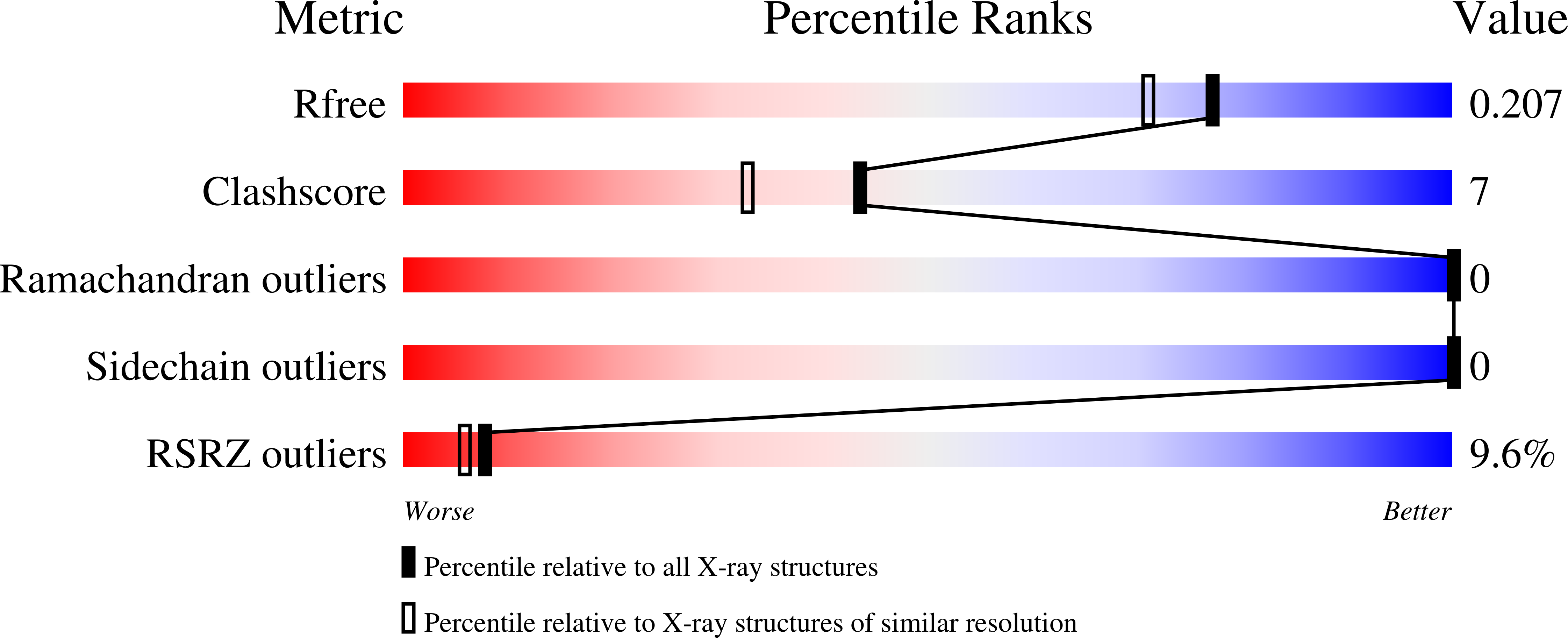Crystal Structure of IL-17 Receptor B SEFIR Domain.
Zhang, B., Liu, C., Qian, W., Han, Y., Li, X., Deng, J.(2013) J Immunol 190: 2320-2326
- PubMed: 23355738
- DOI: https://doi.org/10.4049/jimmunol.1202922
- Primary Citation of Related Structures:
3VBC - PubMed Abstract:
IL-17 cytokines play a crucial role in a variety of inflammatory and autoimmune diseases. They signal through heterodimeric receptor complexes consisting of members of IL-17R family. A unique intracellular signaling domain was identified within all IL-17Rs, termed similar expression to fibroblast growth factor genes and IL-17R (SEFIR). SEFIR is also found in NF-κB activator 1 (Act1), an E3 ubiquitin ligase, and mediates its recruitment to IL-17Rs. In this study, to our knowledge, we report the structure of the first SEFIR domain from IL-17RB at 1.8Å resolution. SEFIR displays a five-stranded parallel β-sheet that is wrapped by six helices. Site-directed mutagenesis on IL-17RB identified helix αC as being critical for its interaction with Act1 and IL-25 (IL-17E) signaling. Using the current SEFIR structure as a template, the key functional residues in Act1 are also mapped as part of helix αC, which is conserved in IL-17RA and RC, suggesting this helix as a common structural signature for heterotypic SEFIR-SEFIR association. In contrast, helix αB' is important for homodimerization of Act1, implicating a dual ligand-binding model for SEFIR domain, with distinct structural motifs participating in either homotypic or heterotypic interactions. Furthermore, although the IL-17RB-SEFIR structure resembles closest to the Toll/IL-1R domain of TLR10 with low sequence homology, substantial differences were observed at helices αC, αD, and DD' loop. To our knowledge, this study provides the first structural view of the IL-17R intracellular signaling, unraveling the mechanism for the specificity of SEFIR versus Toll/IL-1R domain in their respective signaling pathways.
Organizational Affiliation:
Department of Biochemistry and Molecular Biology, Oklahoma State University, Stillwater, OK 74078, USA.














